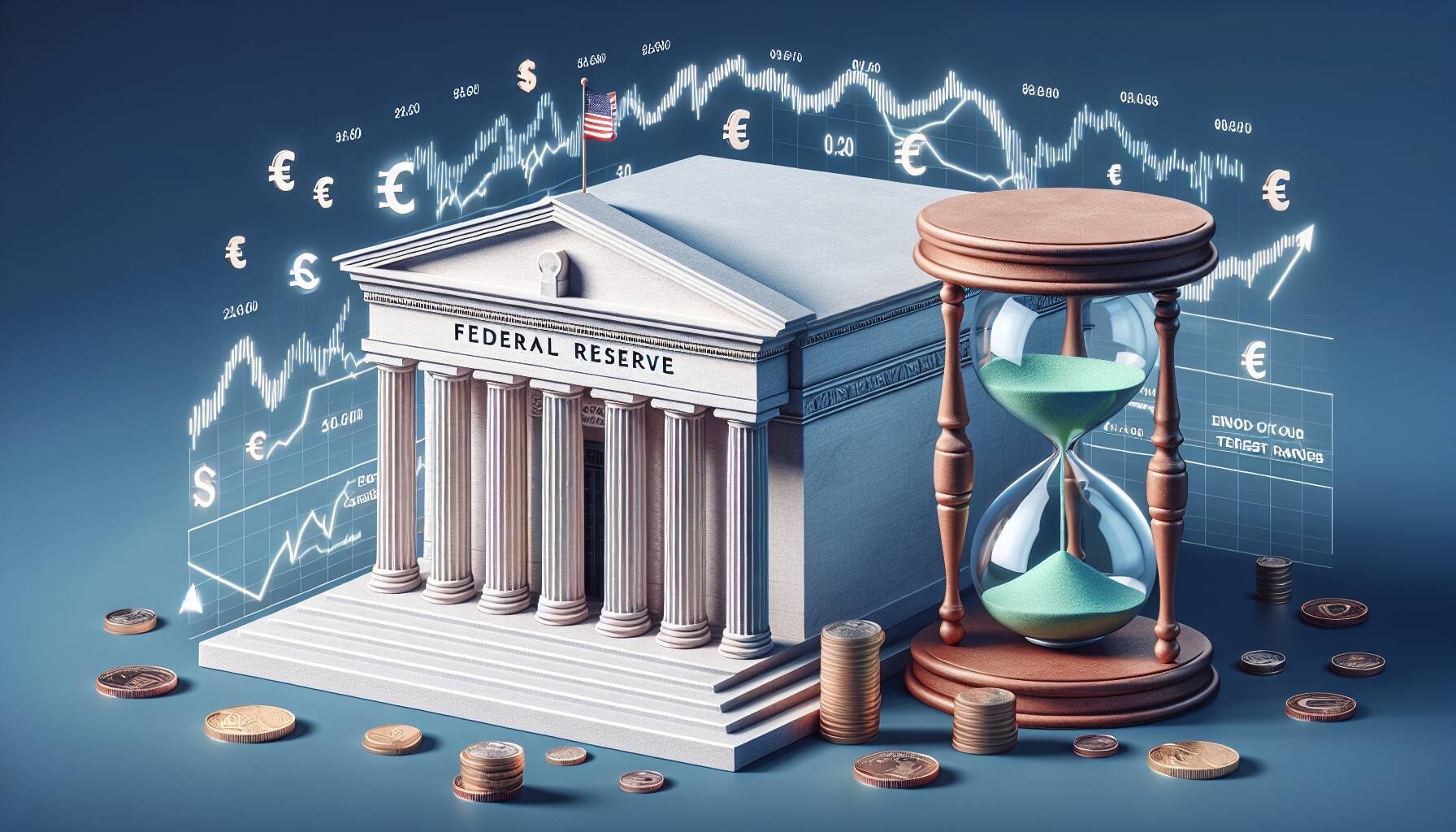In a widely anticipated move, the U.S. Federal Reserve has announced that it will keep benchmark interest rates steady, maintaining them at a range of 4.25%-4.50%. This decision was made during their June meeting, reflecting ongoing confidence in the economy despite recent fluctuations in net exports. The Fed noted that economic activity remains robust, with low unemployment rates and solid labor market conditions, although inflation is still elevated.
The central bank’s quarterly economic projections revealed some shifts, particularly in the outlook for interest rates. Policymakers are now predicting rates will decline to 3.9% by the end of 2025, which suggests a potential for 50 basis point cuts this year, similar to their prior expectations. However, the forecasts for future years indicate a more gradual decline, with projections of 3.6% in 2026 and 3.4% in 2027, signaling fewer cuts than previously estimated.
The Fed has also revised its economic growth projections downward, estimating an increase in GDP of only 1.4% for this year, compared to the previous forecast of 1.7%. In addition, inflation expectations have risen, with Personal Consumption Expenditures (PCE) inflation now anticipated to reach 3% and 3.1% for core PCE, up from earlier predictions. Furthermore, expectations for the unemployment rate have adjusted upward to 4.5% for this year and into 2026.
Bitcoin (BTC), which was trading around $104,000 earlier in the day, showed minimal change, settling at $104,200 shortly after the Fed’s announcement. Meanwhile, major stock indexes, including the S&P 500 and Nasdaq, experienced gains.
Traders and investors are now keenly awaiting remarks from Fed Chair Jerome Powell, scheduled for 2:30 p.m. Eastern Time, which may provide further insights into the Fed’s future monetary policy direction.

Federal Reserve Interest Rate Decision and Economic Projections
The following are key points regarding the recent decisions and projections from the U.S. Federal Reserve:
- Interest Rates Steady:
The Fed maintained the benchmark interest rates at 4.25%-4.50%.
- Economic Activity:
Indicators suggest economic activity is expanding solidly despite fluctuations in net exports.
- Unemployment Rate:
The unemployment rate remains low, indicating a solid labor market.
- Inflation Concerns:
Inflation is elevated, with increased projections for Personal Consumption Expenditures (PCE) at 3% and core PCE at 3.1%.
- Future Rate Projections:
- Rates expected to decline to 3.9% by year-end 2025.
- Further reductions projected to 3.6% in 2026 and 3.4% in 2027.
- GDP Growth Adjustment:
GDP growth is revised down to 1.4% for the year, a decrease from earlier forecasts of 1.7%.
- Rising Unemployment:
The unemployment rate is now projected to rise to 4.5% this year.
- Market Reactions:
Bitcoin remained stable around $104,200, while major indices like the S&P 500 and Nasdaq increased.
- Future Guidance:
Attention now shifts to remarks from Fed Chair Jerome Powell for insights into future monetary policy.
These points reflect on potential impacts to readers’ financial decisions, investment strategies, and understanding of economic conditions.
Analyzing the Fed’s Interest Rate Decision: Implications and Market Reactions
The recent decision by the U.S. Federal Reserve to maintain interest rates at 4.25%-4.50% reflects a carefully measured approach amid a complex economic landscape. This stability contrasts with competing news in global economic circles where central banks face rising inflation and the need for aggressive rate hikes. While some economies tighten their monetary policies, the Fed appears to prioritize tempered growth and a solid labor market, suggesting a competitive edge in fostering consumer confidence.
One significant advantage for the Fed’s strategy lies in its focus on economic resilience despite external pressures such as net export fluctuations. The central bank’s commitment to maintaining a low unemployment rate, while projecting manageable inflation levels, positions it favorably compared to counterparts that may risk economic slowdown through rapid rate increases. However, the downside includes slightly higher inflation estimates for the year and a forecasted rise in unemployment to 4.5%, which could sow seeds of uncertainty among investors and consumers.
This monetary policy environment could particularly benefit sectors tied to consumer spending and investments, such as retail and housing, as sustained low rates encourage borrowing and spending. Conversely, financial institutions that thrive on higher interest rates for lending could find the Fed’s decision to maintain rates a challenge, potentially impacting their profit margins. Additionally, traders in the stock market, as seen with the positive reactions in the S&P 500 and Nasdaq indexes, may experience volatility as they await further insights from Fed Chair Jerome Powell’s upcoming speech. His comments will undoubtedly influence market sentiment and could either bolster or challenge the Fed’s current positioning in response to evolving economic indicators.

















